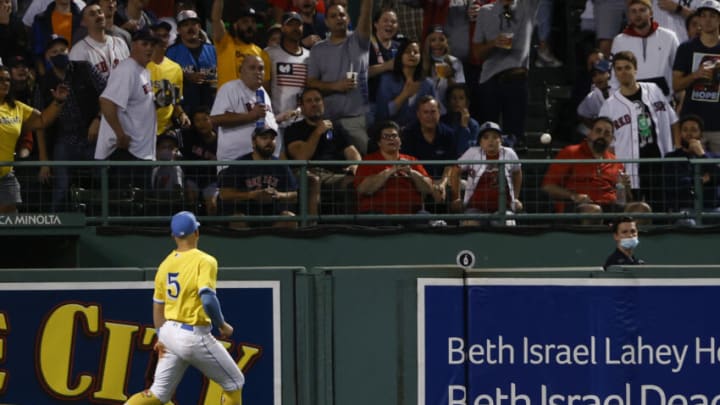There are plenty of ideas floating around the internet about improving the action in baseball. Pitch clocks, bullpen limits, juicing the ball, dejuicing the ball, eliminating shifts, limiting shifts … any of them would induce some degree of change for MLB, as well as unexpected changes that would necessitate further adjustments.
If only there was a solution that had been tried before, where we would know how things would turn out. Well, there is. Granted, there’s a huge cost involved, but if we want the game to work better, it would be well worth it.
To make the case for changing MLB, let’s think about golf for a minute
In the 1990 Masters Tournament, Augusta National played at a length of 6,980 yards. Twenty years later, the total length had been increased to 7,435 yards, an increase of more than six percent. This is a trend followed by courses all over the world, because golfers today are stronger and use better equipment and thus are able to drive the ball much further than they could back then.
Clearly, the emphasis on strength is evident in baseball as well. Home runs are more prevalent than ever before, and fewer plate appearances end with the ball in play because walks and strikeouts have increased as well. For fans who love the athletic aspect of the game — the speed of baserunners and the wizardry of great defensive players — or for those who would just like to see some variety, and not every game turned into a Home Run Derby, these changes have left the game lacking.
Consider “The Catch,” so overwhelmingly considered the greatest defensive play ever that it needs no other description. But Willie Mays‘ grab in the 1954 World Series would not have been possible in any Major League ballpark today, because the center field fence in the Polo Grounds stood 483 feet from home plate.
Now, nobody is saying today’s ballparks need to be that big, but moving the fences back a bit would mean more balls in play, and more chances for great defense.
Going back to our golf example, moving the fences back 6% would mean about 20 feet down the lines and 30 feet to center. Because math is cool, this change would increase the size of the outfield by as much as 14%. Maybe that still doesn’t seem like a lot, but ask yourself how many bloopers would drop and how many line drives would get through the gaps over the course of a season if outfielders had to run 14% further.
Think about what that means:
- Cheap home runs are turned into outs, or doubles and triples, meaning more speed and defense.
- Fast outfielders and baserunners become more valuable. The best outfielders will have more opportunities to show their skills.
- Balls hit into the gap will be more difficult to cut off, which means shifts will be riskier. This is a cleaner solution than trying to legislate shifts away.
- More baserunners increases the value of contact hitters, which means the guy who swings for the fences with two strikes has more trouble finding a job.
- More baserunners also means that bunts and stolen bases aren’t quite as shunned from an analytical standpoint.
- True power hitters (the guys who can clear any fence) will be more valued when there aren’t six guys in the lineup hitting 30 home runs.
Again, these changes will be on the margins. But, as Crash Davis points out in “Bull Durham,” one extra hit a week turns a .250 hitter into a .300 hitter. That one hit a week, spread out over the whole league, turns 1968 (the Year of the Pitcher) into 1930 (when the entire MLB hit .300). So, it doesn’t take a major change to alter the aesthetic of the game for the better.
This won’t be simple, but it won’t be a tough as it sounds. Many ballparks can effect this change simply by moving home plate back. Those that don’t have enough space there might need to take out a row in the bleachers or relocate the bullpens. Maybe in a few parks this will not be feasible, but one thing we know about all stadiums is that they will be replaced sooner or later. Until then, the exceptions will prove the value of the change.
